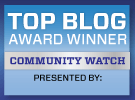The month of April is national child abuse prevention month. It is a time to raise awareness about child abuse and neglect and to encourage individuals and communities to support children and families.
Child abuse and neglect often takes place in the home and comes from a person the child knows -- a parent, relative, baby-sitter or a friend of the family. A child of any age, race, or socioeconomic background can become a victim of abuse and neglect. Nine out of ten children are hurt by their own parents. Children suffer the pain, parents suffer the shock and guilt of their own behavior.
Some of the reasons for physical and psychological mistreatment of children within the family are parental feelings of frustration, stress such as marital, financial problems, substance abuse and or isolation from the support of family and friends.
The types of abuse include Emotional, physical, sexual abuse and negligent treatment of a child under the age of 18. Neglect is the failure to provide the child with basic needs this also includes inadequate supervision, abandonment, or inattention to a special education need. Physical abuse is the physical injury inflected on a child as a result of shaking, burning, kicking, hitting, beating or
otherwise harming a child. Sexual abuse of a child may include indecent exposure, fondling,incest, rape, or the production of pornographic materials. Emotional abuse is the failure to provide warmth, supervision, attention to the child, criticism, threats, and rejection,or otherwise normal life experiences. It impairs the child’s emotional development or sense of self-worth.
The impact of child maltreatment can be profound. The long-term effects can be physical,psychological, or behavioral. It can include mental illness, substance abuse,domestic violence,social problems with other children and adults, teen pregnancy and lack of success in school.
The first step in helping or getting help for an abused or neglected child is to recognize signs and symptoms that may signal the presence of child abuse. The child that is possibly suffering from neglect is frequently absent from school, lacks sufficient clothing for the weather, states there is no one at home to provide care, poor hygiene, or begs or steals food or money from school. The child that is possibly suffering from physical abuse has unexplained bruises,bites,burns, or welts, or the child appears frightened of a parent or caregiver and is afraid to go home. The child that is possibly being emotionally abused can show extremes in behavior,ranging from being overly aggressive to overly passive. Self-destructive, or has habit disorders. The child that is possibly being sexually abused can display age-inappropriate sexual play with toys,self,or others. Or can have age inappropriate knowledge of sex.
The following are some things that you can do to help prevent child abuse and neglect. Be a friend to a parent you know. Ask how their children are doing, if a new parent seems to be struggling offer to baby-sit, run errands, or offer a friendly ear. Make an effort to look out for one anothers children. Teach children their rights,children should be taught that no one should touch them in areas covered by a bathing suit, tell them to say no and report to an adult right
away. Anything you do to support kids and parents in your family and community helps reduce the likelihood of child abuse and neglect. Children often drop hints in an attempt to feel out an adult’s reaction before sharing a situation. Do not push the child to tell you more than he or she is willing to share, and let the child know that telling about the abuse or neglect was the right thing to do. Avoid overreaction or criticizing, and keep your own feelings under control. Above
all be supportive.
Wear a blue ribbon and tell people it stands for the prevention of child abuse and neglect. If you suspect a child has been abused report it. If you witness a child being harmed or see evidence of abuse. Contact your local law enforcement.
We can all help prevent child abuse by recognizing the risk factors, protecting children who are at risk and supporting families.

No comments:
Post a Comment